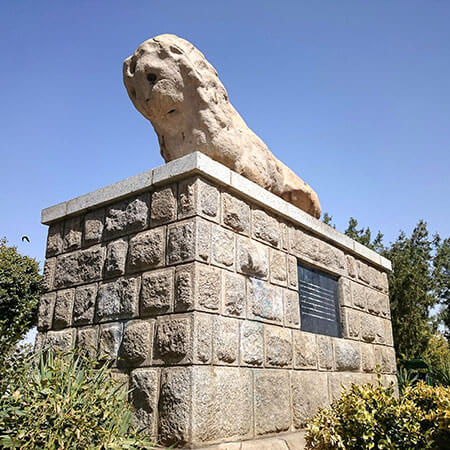Stone Lion

The stone lion statue is one of the ancient monuments in the city of Hamedan, located at the end of a 12-meter sang shir street lane in the middle of a square-shaped square of the same name. This work registered on December 15, 1310 with the registration number 93 as one of the national works of Iran.
The hill, which is now a statue of stone lime, is located on an ancient hill, because the coffin belonging to the Parthian period has been located and kept at the Museum of the Hegmataneh Hills. This statue, along with its symmetry, was first located at the gate of the city of Hamedan, and the Arabs called it the “Gate of Valve” during the conquest of Hamadan. In the year 319 AH K, which captured the Deylamian of Hamadan, destroyed the city gate. Mardavij Deilami intended to transfer one of them to Ray, but failed, and break the knuckles of one of them and destroy the other. In the Islamic era, this milk was taken as a protector for the city and for the spell to reject the illness. Treasure hunters have broken it and its nose have been flattened by the wife’s kisses that thought kiss on lion’s nose could bring them husbands.
The history of the construction of the stone statue is controversial, but the way of carving the statue and its proximity to the Parthians and the discovery of the coffin of the Parthian period makes it clear that the statue is related to the Parthians, but this work is from Solucci / Parthian art monuments. It is likely that Alexander would build it in honor of his head of Hephaistos, who was dead in Ecbatana.
Gallery







